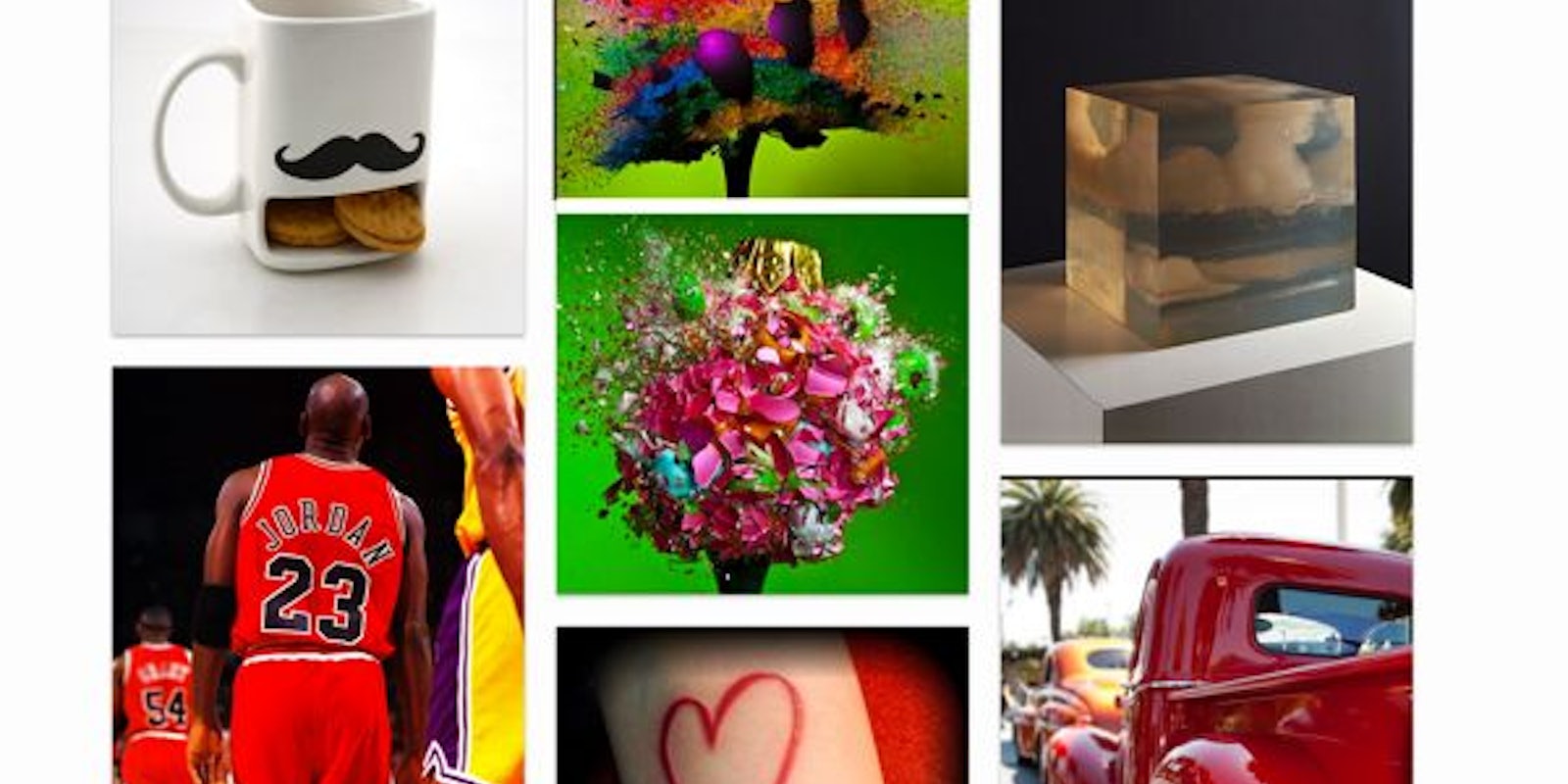Pinterest is facing criticism for automatically signing new users up to follow boards based on images those users select. But there’s nothing nefarious about it, a Pinterest spokesperson said.
On Tuesday, a post by blogger Michael Hodson claiming to reveal “major flaws” in Pinterest’s new user sign-up process went viral. Hodson said he spoke to somebody at Pinterest in order to back up his claims.
However, Pinterest spokesperson Barry Schnitt told the Daily Dot that Hodson may have misunderstood some key parts of the process, since he declined to speak on the phone.
“I offered to call him but he preferred to communicate over email,” Schnitt said.
Here’s what Pinterest has to say about Hodson’s claims. You’ll be surprised they don’t disagree about everything:
Issue 1: Involuntary following
Currently, when you sign up to join the recently open-access network, it asks you to select five photos, and automatically follows (fifty or more) boards for you based on those choices. There is no way to opt out of making an image selection.
Hodson argues that Pinterest should warn people before signing them up for boards.
“They just basically picked 49 extra boards they thought I might like, given on the five photos I picked. Completely involuntary on my part.”
Schnitt told us that since Pinterest is doing something brand new, its sign-up process may seem unconventional.
“Pinterest connects you with people who have the same interests as you. This is not really something that’s been done before and so we’re trying lots of different things to get it right. For example, we make some initial connections for people in some of the orientations we’re testing. This enables people to start with something in their feed and see the benefits of following boards from people they may not know.”
Issue 2: Promoting brands’ boards
Hodson said he signed up for multiple Pinterest accounts in order to see which boards Pinterest would subscribe him to. Five times he was made to automatically follow clothing shop United Colors of Benetton based on his choices.
“Is Benetton doing anything wrong? Absolutely not. Are they getting a massively huge advantage over everyone else in the process. Absolutely.”
Schnitt agreed that it’s a problem Hodson got the same board so many times.
“We agree that there should always be more boards available as choices in orientation,” he said.
However, he said Hodson has it wrong about why the boards that are part of the sign-up process were selected. It’s not that they’re brands; it’s that they’re specific.
“We use a combination of both automated and subjective measures to figure out the high-quality boards to include as potential choices during orientation. For example, it’s important that a board is homogenous. That is, it’s important that something we suggest related to weddings be only about weddings and not also about other events like birthdays.”
That’s why brands are more likely to be selected than ordinary users. The average Pinterest user does not specialize her boards to the extent most brands do.
Schnitt added there is no way for brands to promote their boards that way. They must be selected, like every other board used in the sign-up process.
Issue 3: Transparency
Probably Hodson’s biggest problem is Pinterest’s lack of transparency. The site signs new users up for multiple boards with no warning:
“But Pinterest takes that voluntary action completely out of the sign-up process and just assigns you to 45+ boards… totally determined by some mysterious formula they are unwilling to discuss in any depth.”
Putting aside the site’s mysterious formula for which boards to recommend, Schnitt said that the sign-up process Hodson saw is just one of the ones Pinterest is testing, and certainly not the only one with flaws that still need to be worked out.
Schnitt did not mention an earlier sign-up process which was far worse, spamming your Facebook and Twitter feeds with pins. He shared with the Daily Dot a screenshot of another version that shows users their areas of interests and allows them to click the “follow” button personally.
“If you create a couple of new accounts, you should see at least one of the variations we’re testing,” he said. “We’re testing several other orientations right now and will continue to try to do better at connecting people to inspiring content.”
Image via Michael Hodson/Pinterest
